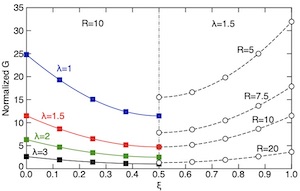
If you have some familiarity with editing html content, you can use GEDitCOM II's advanced feature that allows html content in notes.
Type in a plain text version of the transcribed notes into the new record.Ĭensus records are usually in the form of a table of names and data. Create a new note record using the Tree→New Record→Notes menu command. If you go to that trouble, it is good practice to document that work with a text transcription in your genealogy data. Many genealogists spend time going over such records, interpreting the handwriting, and writing down a text transcription. Reading census images can be a challenge, especially if it is a handwritten record. Text Transcription of the Census Data (optional) You can open the record and enter a good title (the initial title will be the file name) and enter the date for the census. The new multimedia object will be selected in the GEDitCOM II index window. (Note: if you want to keep a copy at the original location too, use the "Copy to Library" button instead of the "Move to Library" button.) The file will be removed from its original location, renamed, and saved with your genealogy files. Save the image in that folder or in any subfolder in the folder giving it a good name. You will enter a standard Macintosh file save dialog box starting in the main multimedia library folder for your current GEDitCOM II file. Your best option, therefore, is to click the "Move to Library" button. It is a good idea to organize all your multimedia into library folders (see the GEDitCOM II help for details). Most likely, you will be warned that the image is not in any of your multimedia library folders for the current genealogy file. When ready, release the mouse button to drop the image and add to your genealogy file. You can drag on top of the "Multimedia Objects" album or to white space in that list the icon will change to a "plus" icon. Find the image file in the Macintosh Finder and then click and drag the file to the left side ("Records Albums" list) of the GEDitCOM II index window for your genealogy file. It can be saved with your GEDitCOM II data several ways here is an easy one: You have gone to the trouble to obtain an image of a census page you might as well save it in a safe place along with your genealogy files. A Multimedia Object with the Scanned Sensus Page A good tool to proceed in this direction is to use the US-UK-Canadian Census Report Extension. Copy and paste the event into other individuals and familiesĪfter entering some census events, you may want to find more census data to further your genealogy research. Attach a census event to one individual in the census record. Once the above records are done, the remaining steps are to link them to individuals and families in your file: Create a source record for the census year and country (if needed and optional). Create a note record with a text transcription of the census data (optional). Create a multimedia object with the scanned census page. Once you have an image, you create one to three new records in your GEDitCOM II genealogy file: These images are available on many web sites (such as, Canadian public archives,, or ). 
The Planįinding a census record means you probably have obtained a scanned image of a census page. The goal is to have lots of information (scanned image, text transcription, and source information) and to have that information readily available wherever it makes sense. No one method is wrong, but this tutorial gives a very robust method for adding census detail to your files. With all this freedom, however, your data can become disorganized if you do not choose a consistent method for various tasks.
GEDitCOM II is a very flexible genealogy application, which means you have many options for how to document your research with sources such as census records. Documenting your Research with Census Events





 0 kommentar(er)
0 kommentar(er)
